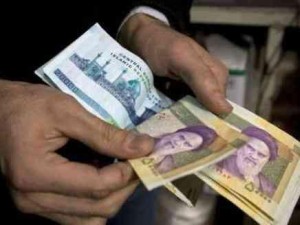Money and Costs in Iran
Money in Iran
Money in Iran and Costs; The official unit of currency is the Iranian rial, but Iranians almost always talk in terms of tomans, a unit equal to 10 rials. We can’t emphasise enough how important it is to get your head around the idea of tomans as soon as you can.
For all intents and purposes, Iran is a purely cash economy. No credit cards. No travellers cheques. Just bring cold, hard cash – preferably in high-denomination euros or US dollars. Apart from some hotels, carpet shops and tour agencies where you can pay in dollars or euros, all transactions are in rials (or tomans). You’ll obviously need to carry a mix of rials and dollars or euros – you’d need a wheelbarrow to cart around everything in rials.
Which brings us to the question of what sort of cash you should bring to Iran. It used to be, somewhat ironically, that the US dollar was king in Iran. But in response to strong US condemnation of Iran’s nuclear program and falling US dollar, the Ahmadinejad government has encouraged Iranian banks and businesses to turn away from the dollar and toward the euro. So much so that some banks won’t even change dollars anymore. On this research trip we had no problem changing dollars (as long as the notes were printed since 1996), but if you have to choose between one or the other then it’s safer to go for euros. UK pounds get decent rates in most bigger towns too, but can’t always be exchanged at borders or in smaller moneychangers, so have at least a few dollars or euros for emergencies.
There is a thriving business in UAE dirhams along the Persian Gulf coast. However, Turkish lira are treated with the utmost scorn everywhere except close to the Turkish border; ditto for the Afghan, Azerbaijani, Turkmen and Pakistani currencies.
Whichever currency you choose, the most important thing to remember is to bring as much cash as you’re likely to need, then a bit more. Getting your hands on money once you’re inside Iran is a nightmare.

More Content About Money and costs in Iran: ATMs, Cash, Credit cards, International transfers, Money Exchange and Travellers cheques
ATMs
Although Iran has a functioning network of ATMs (cashpoint machines), they can only be used with locally issued bank cards, so are useless to travellers unless you open a local account.
Cash
Although there are coins for IR1, IR2, IR5, IR10, IR20, IR50, IR100, IR250 and IR500, only the latter four denominations are at all common. Indeed, so rare are IR1 coins (no longer minted) that they are considered lucky despite being utterly worthless. There are notes for IR100 (rare), IR200 (rare), IR500, IR1000 (two varieties), IR2000 (two varieties), IR5000 (two varieties), IR10, 000, IR20, 000 and, since March 2007, a IR50, 000 note bearing the three-elipse nuclear symbol. The red-coloured IR20, 000 and IR50, 000 notes look confusingly similar. Hang on to your filthy IR500 and IR1000 notes to pay shared taxi fares.
Most of the time no-one seems to care what state rial notes are in, then out of the blue someone will reject one on the grounds that it has a tiny tear or is too grubby. Note that this tolerance doesn’t apply to foreign currencies, which need to be clean and without any tears whatsoever. If they’re not falling apart, Iranian banknotes are easy to read as the numbers and names are printed in Farsi and English. However, coins are only marked in Farsi.
International transfers
It should be possible to have money transferred from overseas to a bank or an individual’s account in Iran. Note, however, that economic sanctions might mean banking relations with some countries are cut completely, in which case transfers will become almost impossible.
Money Exchange
The quickest and easiest way to change cash is at an official money-exchange office, where the whole deal is done in seconds, unlike in most banks where half an hour is fast. Exchange shops can be found in most cities, usually signed in English.
Changing money in an exchange shop is much safer than doing so with a street moneychanger. If you do change on the street, expect to be treated like a total moron with no idea of current rates. You should demand the same rate as you’d get in the bank and expect the changer to take a IR10, 000 ‘service fee’. Count the money carefully, and don’t hand over your bill until you’re sure it’s correct. If you can’t find a bank or exchange office, carpet shops, jewellers or someone in the bazaar should be able to help.
Travellers cheques
American Express. Leave home without it! Like credit cards, travellers cheques are useless in Iran. Only a couple of banks attached to international hotels in Tehran can (unofficially) change travellers cheques, but even this could change at any time so don’t rely on it.
Source: Loney Planet
 Iran Visa Iranian eVisa Official Center
Iran Visa Iranian eVisa Official Center